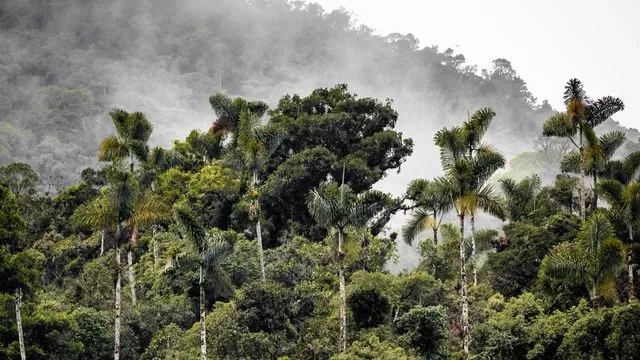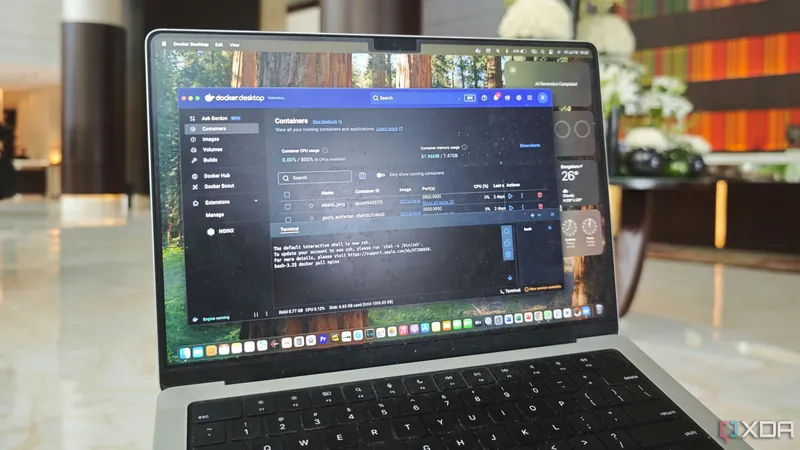
Revolutionary Study Unveils Secrets of Amazon Canopies: How Trees Thrive Under Stress!
2025-06-16
Author: Michael
Unlocking the Secrets of the Amazon Rainforest
A groundbreaking study from Michigan State University has revealed a fascinating mechanism that allows Amazon rainforest canopy trees to cope with intense sunlight, paving the way for improved monitoring of their health amid climate challenges.
Trees as Solar Antennas: How They Manage Energy
Led by PhD candidate Leonardo Ziccardi, this research uncovers how tropical trees act like massive solar antennas, gathering expansive amounts of light energy that must be effectively managed. When these trees absorb energy beyond their photosynthesis needs, they must dissipate the excess as heat or re-emit it as light, a phenomenon known as chlorophyll fluorescence.
A Closer Look: Adventures in the Amazon Canopy
“It's been a long journey,” Ziccardi shared. Since 2019, he has climbed towering trees—sometimes reaching up to 200 feet in height—throughout the Amazon to unravel how these majestic forests react to environmental stressors. His team's extensive fieldwork has resulted in a unique dataset, honed through countless hours spent among the canopy.
High-Tech Tools for Climate Insights
Using the innovative MultispeQ instrument from MSU, Ziccardi analyzed how leaves in their natural habitats manage incoming light, balancing photosynthesis and energy dissipation. This technology has been vital in shedding light on how Amazon canopies handle seasonal extremes.
Facing Climate Change: What Do the Findings Mean?
With the Amazon facing rising temperatures and drought conditions, understanding trees' light energy management becomes crucial for their survival. Increased sunlight—exacerbated by reduced cloud cover during dry spells—puts further strain on these ecosystems, intensifying the need for research like this.
A Nuanced Response to Stressors
The study is historic, showcasing a three-phase response of leaves to escalating light and drought. Initially, leaves achieve a delicate balance between photosynthesis and fluorescence. However, as stress intensifies, this balance falters—photosynthesis declines and fluorescence spikes, indicating potential harm to the plant’s photosynthetic functions.
Implications for Monitoring Amazon Health
These findings are pivotal for scientists using satellite data, as they challenge the traditional notion that photosynthesis and fluorescence always correlate. Under duress, such as high light stress, fluorescence may increase even as photosynthesis falters, leading to potentially misleading assessments of ecosystem health and productivity during droughts.
The Journey Continues
This research is a crucial step in understanding the resilience of the Amazon rainforest amidst climate change, signaling that continued exploration and monitoring are essential for the future health of these vital ecosystems.









 Brasil (PT)
Brasil (PT)
 Canada (EN)
Canada (EN)
 Chile (ES)
Chile (ES)
 Česko (CS)
Česko (CS)
 대한민국 (KO)
대한민국 (KO)
 España (ES)
España (ES)
 France (FR)
France (FR)
 Hong Kong (EN)
Hong Kong (EN)
 Italia (IT)
Italia (IT)
 日本 (JA)
日本 (JA)
 Magyarország (HU)
Magyarország (HU)
 Norge (NO)
Norge (NO)
 Polska (PL)
Polska (PL)
 Schweiz (DE)
Schweiz (DE)
 Singapore (EN)
Singapore (EN)
 Sverige (SV)
Sverige (SV)
 Suomi (FI)
Suomi (FI)
 Türkiye (TR)
Türkiye (TR)
 الإمارات العربية المتحدة (AR)
الإمارات العربية المتحدة (AR)